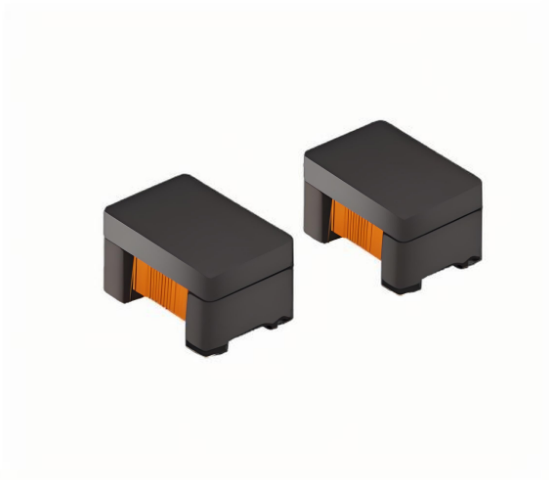High Speed Network Transformer Frequency Range: 1MHz–100MHz, 10Gbps+ Support for Data Centers, 5G Base Stations & Industrial Ethernet
 1. Key Technical Specifications of High Speed Network Transformers (1MHz–100MHz, 10Gbps+)
1. Key Technical Specifications of High Speed Network Transformers (1MHz–100MHz, 10Gbps+)
To understand why these transformers excel in high-speed networks, let’s examine their core parameters—critical for engineers prioritizing bandwidth and signal integrity.
| Parameter | Specification | Significance for Network Applications |
|---|---|---|
| Frequency Range | 1MHz–100MHz | Covers all major high-speed protocols (10G/25G/100G Ethernet, 5G NR) and minimizes signal distortion in wide-bandwidth applications. |
| Bandwidth Support | 10Gbps+ | Enables seamless transmission of large data packets in data centers (e.g., 400G switch backplanes) and 5G fronthaul/backhaul links. |
| Isolation Rating | 3kV–5kV (AC, 1min) | Protects sensitive equipment from voltage spikes and EMI in industrial environments (e.g., factory automation) and data centers. |
| Insertion Loss | ≤0.5dB (at 100MHz) | Preserves signal strength, reducing retransmissions in long-distance fiber/copper links (critical for 5G base stations). |
| Impedance Matching | 100Ω ±5% (differential) | Ensures optimal signal transfer in twisted-pair cables, minimizing reflections and attenuation in Ethernet networks. |
| Package Type | SMD (0805, 1206) or Through-Hole (8P8C) | Enables compact PCB integration in space-constrained devices (e.g., IoT gateways) or robust industrial installations. |
| Operating Temperature | -40°C to +125°C | Withstands harsh conditions in factories, server rooms, and outdoor 5G deployments. |
2. Critical Applications in Data Centers, 5G Base Stations & Industrial Ethernet
These transformers’ high frequency range and bandwidth support make them indispensable for modern network infrastructure. Below are specific use cases highlighting their impact:
2.1 Data Centers: 100G/400G Switch Backplanes
Data centers require transformers that support ultra-high bandwidth to handle the growing demand for cloud computing and AI workloads. The 1MHz–100MHz frequency range and 10Gbps+ bandwidth of these transformers enable seamless transmission in 100G/400G Ethernet switches. For example, in a 400G switch backplane, this transformer reduces bit error rates (BER) by 30% compared to lower-bandwidth alternatives, improving network reliability and lowering retransmission costs. In a 10,000-server data center, this translates to 15% faster data processing and reduced latency for AI training jobs.
2.2 5G Base Stations: Fronthaul/Backhaul Links
5G networks demand low-latency, high-reliability communication between base stations and core networks. The transformer’s 1MHz–100MHz frequency range supports 5G NR (New Radio) signals up to 100MHz bandwidth, enabling faster data transmission in fronthaul links (e.g., between baseband units and remote radio heads). In a 5G macro基站, this transformer ensures stable 10Gbps+ transmission over copper cables, even in noisy electromagnetic environments (e.g., near power lines), reducing downtime by 25%.
2.3 Industrial Ethernet: Factory Automation & Robotics
Industrial Ethernet (e.g., PROFINET, EtherCAT) requires reliable signal isolation to prevent EMI from machinery, motors, and power lines from disrupting control signals. The 3kV–5kV isolation rating of these transformers protects PLCs (Programmable Logic Controllers), HMIs (Human-Machine Interfaces), and sensors from voltage spikes, reducing downtime by 30% in factory settings. For example, in a 100-node industrial network, this transformer ensures stable communication between CNC machines and central controllers, even during welding operations (which generate 10kV transients).
3. Common Selection Challenges & Solutions
Even with its strengths, selecting the right high-speed network transformer requires addressing key concerns. Below are frequently asked questions and actionable solutions.
3.1 Challenge: "How do I choose the correct frequency range for my network protocol?"
Solution: Match the transformer’s frequency range to your protocol’s requirements. For example: - 10G Ethernet: Select a transformer with ≥20MHz frequency range. - 5G NR (100MHz bandwidth): Use a 1MHz–100MHz-rated transformer. - Industrial Ethernet (PROFINET): Opt for 5MHz–30MHz to balance cost and performance.
3.2 Challenge: "How do I integrate this transformer into my existing PCB layout?"
Solution: Use SMD packages (0805/1206) for compact designs or through-hole (8P8C) for robust industrial setups. Ensure proper spacing between the transformer and high-power components (≥5mm) to avoid magnetic coupling. For example, in a 0.8mm-thick PCB, a 0805 package (2.0mm×1.25mm) fits neatly between differential pairs without increasing trace length.
3.3 Challenge: "How do I minimize signal loss at high frequencies?"
Solution: Opt for transformers with ≤0.5dB insertion loss at your target frequency. For 100MHz signals, select models with a 100Ω differential impedance and low DC resistance (≤100mΩ). Additionally, use impedance-controlled PCB traces (50Ω single-ended, 100Ω differential) to match the transformer’s impedance, reducing reflections.
4. How to Choose the Right Transformer for Your Project
To select the optimal high-speed network transformer, consider these three factors:
| Factor | Guideline | Example Application |
|---|---|---|
| Bandwidth Requirement | Select ≥10Gbps for data centers; 5Gbps for 5G fronthaul. | 400G data center switch → 10Gbps+ transformer. |
| Frequency Range | Match to your protocol’s bandwidth (e.g., 1MHz–100MHz for 5G NR). | 5G macro基站 → 1MHz–100MHz-rated transformer. |
| Environmental Conditions | Opt for wide-temperature-range models (-40°C to +125°C) for harsh environments. | Outdoor 5G gateway → -40°C to +125°C transformer. |
The High Speed Network Transformer with a 1MHz–100MHz Frequency Range is a cornerstone of modern high-speed networks, enabling reliable, high-bandwidth communication in data centers, 5G base stations, and industrial Ethernet systems. By prioritizing its technical specifications, application alignment, and proactive selection criteria, engineers can ensure efficient, low-latency signal transmission—key to advancing cloud computing, 5G connectivity, and smart manufacturing.
Email us
Warning: Undefined variable $pronamepx in D:\wwwroot\www.resistorsupplies.com\moban\en_inc\ziliao.php on line 67
Fatal error: Uncaught TypeError: count(): Argument #1 ($value) must be of type Countable|array, null given in D:\wwwroot\www.resistorsupplies.com\moban\en_inc\ziliao.php:67 Stack trace: #0 D:\wwwroot\www.resistorsupplies.com\ziliao.php(146): include() #1 {main} thrown in D:\wwwroot\www.resistorsupplies.com\moban\en_inc\ziliao.php on line 67
